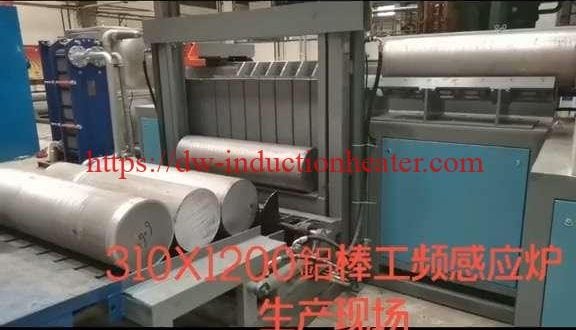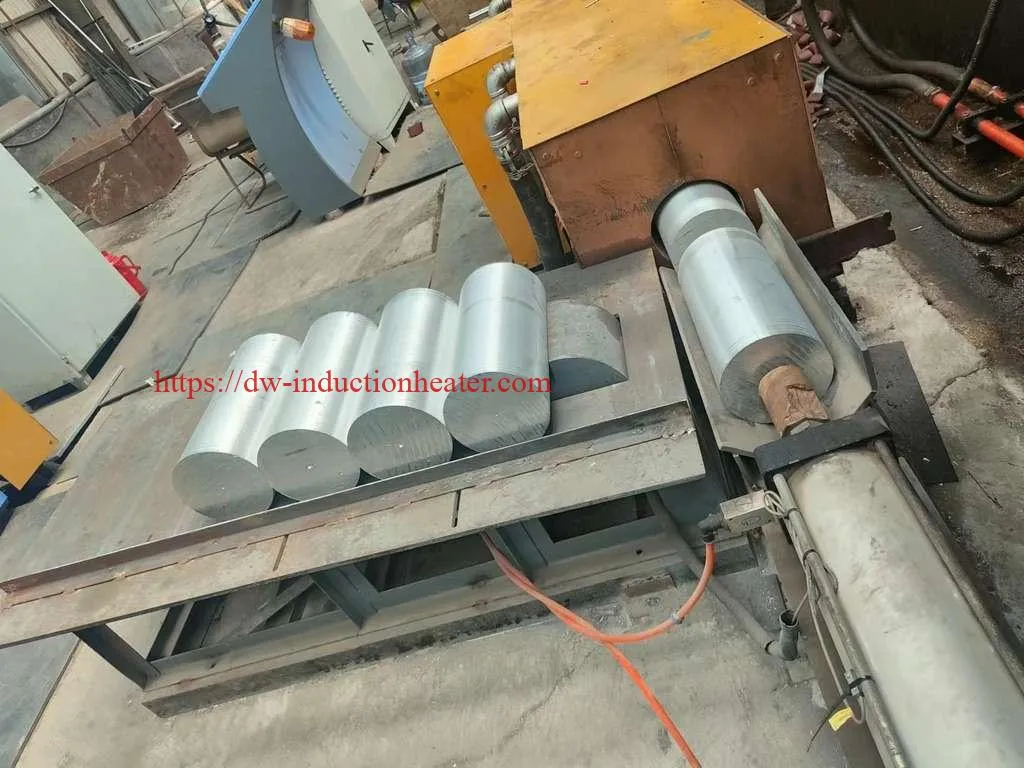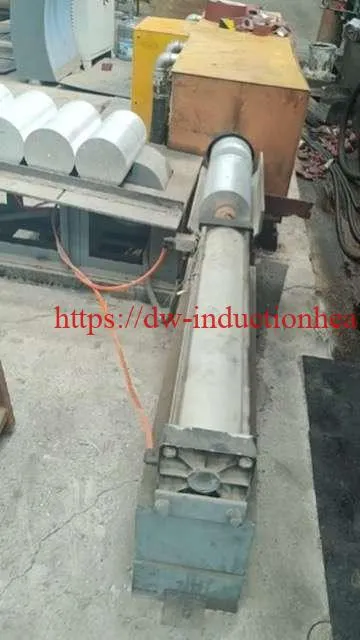 The Ultimate Guide to Aluminum Billets Heating with Induction Heating Systems
The Ultimate Guide to Aluminum Billets Heating with Induction Heating Systems
Heating aluminum billets is a critical process across numerous industries, including aerospace, automotive, and construction. Precision, efficiency, and cost-effectiveness are essential to achieving optimal billet heating results. Among the most advanced technologies available to meet such demands, induction heating systems have become the industry benchmark.
This guide explores aluminum billets heating with induction heating systems, detailing their workings, advantages, application methods, and how they outperform traditional heating solutions. Whether you’re in manufacturing or material processing, this comprehensive guide will illuminate the potential of induction heating for your operations.
The Ultimate Guide to Aluminum Billets Heating with Induction Heating Systems 1
Introduction to Aluminum Billets Heating. 2
What is an Induction Heating System for Billets?. 2
The Science Behind Heating Aluminum with Induction. 2
How Induction Generates Heat in Aluminum Billets. 3
Thermal Properties of Aluminum and Their Effects. 3
Advantages of Induction Heating for Aluminum Billets. 3
- Precision Heating. 3
- Energy Efficiency. 3
- Faster Heating Times. 4
- Enhanced Safety. 4
- Minimal Oxidation and Scaling. 4
Key Components of an Induction Heating System.. 4
Industrial Applications of Heated Aluminum Billets. 4
Step-by-Step Process for Heating Aluminum Billets with Induction. 5
Energy Efficiency Comparison: Induction Heating vs. Gas Furnaces. 5
FAQs on Aluminum Billets and Induction Heating Systems. 5
Conclusion: Transforming Aluminum Heating with Induction Technology. 6
Introduction to Aluminum Billets Heating
Aluminum billets, the semi-finished metal products derived from casting, serve as the backbone of many industrial processes, from extrusion to forging. Before these billets can be shaped or formed, they must be heated to specific temperatures suitable for plastic deformation.
Precision is paramount for aluminum billets because of their unique properties. Aluminum is thermally conductive and has a low melting point compared to other metals, making it susceptible to overheating or uneven temperature distributions.
This is where induction heating systems arise as a game-changing solution. With unmatched precision and uniform heating capabilities, induction offers a non-contact, efficient alternative to conventional gas burners or resistance heaters.
What is an Induction Heating System for Billets?
An induction heating system is a high-frequency electromagnetic heating technology designed for rapid and uniform thermal processing of materials like aluminum. Instead of relying on traditional flame or conductive heat transfer methods, induction utilizes alternating electromagnetic fields to heat the billet’s core directly.
At the heart of this system lies a coil—often called an induction coil or inductor. When current passes through the coil, it generates a magnetic field that induces electric currents in the aluminum billet, known as eddy currents. These eddy currents result in localized and concentrated heating, perfect for aluminum billets.
Key attributes of induction heating systems include:
- High-speed heating.
- Precision temperature control.
- Minimal heat loss to the environment.
The Science Behind Heating Aluminum with Induction
How Induction Generates Heat in Aluminum Billets
The principle of induction heating revolves around Faraday’s Law of Electromagnetic Induction, which states that an alternating current produces a magnetic field and induces electric currents in nearby conductive materials. When aluminum billets are placed within the magnetic field generated by the induction coil, eddy currents are induced in the billets, rapidly generating heat due to the aluminum’s resistivity.
Because induction heats from within, it eliminates inefficiencies like heat transfer resistance seen in traditional furnace-based approaches.
Thermal Properties of Aluminum and Their Effects
Aluminum has distinctive thermal properties:
- High thermal conductivity: While beneficial in many applications, this feature presents challenges during heating, as heat tends to dissipate too quickly. Induction heating mitigates these issues through rapid, focused energy delivery.
- Low electrical resistivity: Induction frequencies must be carefully tuned for aluminum billets to ensure efficient eddy current generation.
- Melting point (660.3°C): Temperature and heating rates must be precisely controlled using advanced induction systems to prevent damage.
Understanding aluminum’s heat-related characteristics ensures optimal system design and process control.
Advantages of Induction Heating for Aluminum Billets
Induction heating systems offer a range of distinct advantages over traditional heating methods:
1. Precision Heating
Induction systems provide exact temperature control, allowing billets to reach the desired temperature (e.g., 450°C–600°C for extrusion) uniformly.
2. Energy Efficiency
By directly heating the billet without intermediary materials or flames, induction systems achieve 90%+ energy efficiency, drastically reducing energy waste compared to gas furnaces.
3. Faster Heating Times
Induction coils deliver heat almost instantaneously, reducing pre-heating times and increasing throughput for high-demand industrial processes.
4. Enhanced Safety
The non-contact nature of induction heating eliminates fire hazards and keeps the surrounding environment cooler, creating a safer workplace for operators.
5. Minimal Oxidation and Scaling
Unlike open-flame furnaces, induction heating systems significantly reduce oxidation and surface contamination, preserving the quality and finish of the billet.
Key Components of an Induction Heating System
An induction heating system comprises several vital components designed to maximize performance and durability:
- Induction Coil (Inductor): The electromagnetic coil that generates the high-frequency field required for billet heating. Coil design plays a critical role in heat uniformity.
- Power Supply: Converts the standard electrical supply into high-frequency alternating current (AC) optimized for induction heating.
- Cooling System: Maintains thermal equilibrium by cooling the induction coil and critical system components.
- Control Unit: Enables operators to adjust parameters like frequency, power, and temperature, ensuring precise heating.
- Work Handling System: Facilitates billet positioning and movement through the induction coil for seamless heating cycles.
Industrial Applications of Heated Aluminum Billets
Induction-heated aluminum billets find application in various industrial workflows:
- Extrusion: Uniformly heated billets ensure seamless extrusion for aluminum profiles used in construction, automotive components, and more.
- Forging: Induction heating delivers billets at the perfect temperature for forging operations, improving part quality and reducing material waste.
- Rolling Mills: Pre-heated aluminum billets enhance the rolling process by enabling consistent deformation.
- Heat Treatment: Induction heating is also suitable for thermal processing and microstructural enhancement of aluminum components.
Step-by-Step Process for Heating Aluminum Billets with Induction
- Billet Preparation: Aluminum billets are inspected for defects and cleaned to ensure consistent heating.
- System Configuration: Parameters such as desired temperature, coil frequency, and billet diameter are set in the control unit.
- Positioning: The billets are positioned within or fed through the induction coil using an automated handling system.
- Heating Phase: The induction generator activates the coil, initiating eddy current heating. Real-time sensors monitor billet temperature.
- Temperature Monitoring: Pyrometers and thermocouples ensure billets reach the specified temperature with minimal deviation.
- Post-Heating Operations: The heated billets are immediately transferred for extrusion, forging, or further processing.
Energy Efficiency Comparison: Induction Heating vs. Gas Furnaces
A key selling point of induction heating is its superior energy efficiency compared to traditional gas furnaces:
| Aspect | Induction Heating | Gas Furnaces |
| Energy Efficiency | ~90% (minimal heat loss) | ~40–60% (significant heat loss) |
| Startup Time | Almost instantaneous | Prolonged warmup required |
| Environmental Impact | Minimal emissions | Emissions from fuel combustion |
| Cost Effectiveness | Long-term savings via efficiency | Higher ongoing fuel costs |
FAQs on Aluminum Billets and Induction Heating Systems
- What is the ideal temperature range for heating aluminum billets with induction?
The temperature range typically varies between 450°C to 600°C, depending on the subsequent processing method, such as extrusion or forging. - Can induction heating handle large-diameter billets?
Yes, induction systems are scalable and can handle large billets by customizing coil designs and increasing generator power. - How does induction heating enhance billet quality?
By eliminating open flames and ensuring uniform heating, induction prevents surface oxidation, scaling, and cracking, resulting in higher-quality billets. - What industries benefit from induction-heated aluminum billets?
Industries such as aerospace, automotive, construction, and packaging benefit by using precise and efficient billet heating methods. - Is induction heating a cost-effective solution for small-scale aluminum processing?
While initial equipment costs may be higher, induction’s energy savings, fast heating cycles, and reduced material waste make it highly cost-effective in the long run.
Conclusion: Transforming Aluminum Heating with Induction Technology
Induction heating systems are transforming the way industries approach aluminum billets heating, delivering unparalleled energy efficiency, precision, and process speed. Whether you’re scaling up production or enhancing billet quality, the advantages of induction heating far outweigh those of traditional methods.
For industries seeking superior solutions to improve productivity and sustainability, investing in induction technology is no longer optional—it’s the cornerstone of future-forward aluminum processing. Start today, and embrace the cutting-edge benefits of induction heating.



